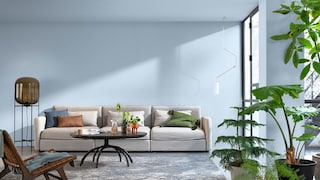
Color of the Year 2022
It’s around two years since the COVID-19 pandemic started. For many of us, staying at home has been the best thing to do to help prevent the spread of the virus. It also means we’ve been staring at the same four walls for what seems like an eternity. Which could be having an impact on our mental health.
With awareness around the topic of mental health continuing to increase, we now know a lot more about the effect that a lockdown can have on our overall well-being. Which raises the question, is there something we can do about it by adapting our living spaces to better cope with being stuck at home?
Color psychology is an important factor when considering how our surroundings can affect our mental health. In essence, it takes into account how various colors can influence our state of mind – as well as our emotions and behaviors. When faced with a prolonged global pandemic, good health and well-being are of even greater concern, as reflected in the United Nations Sustainable Development Goals (SDGs), one of which focuses on ensuring healthy lives and promoting well-being at all ages (SDG 3) as part of its sustainable development framework.
Studies have shown that blue and green can create a calming atmosphere; orange and yellow can stimulate appetite; red and pink can inspire passion and energy; while purple can boost creativity and productivity. However, everyone’s feeling towards a color is unique, because it’s often rooted in personal experiences or culture. Given that color can have such a powerful impact on our moods, feelings and behaviors, it’s well worth investigating which colors can positively influence our mental health during periods of prolonged isolation.
Our Dulux brand offers more than 2,000 color choices in the UK alone. This kaleidoscope of hues and shades can bring color psychology to life, helping to transform living spaces that meet people’s individual needs.
When it comes to selecting colors, choosing earthy green tones and mixing them with blues can provide a relaxing and rejuvenating environment for the mind and body. Let’s look at the bedroom, for example. It’s where we sleep and revitalize ourselves. It’s a place that should embody peacefulness to enable better quality sleep. So an ideal choice for a bedroom is a calming shade of light blue, paired with a cool shade of green. This combination can create a peaceful and serene space for the body to be at ease while reducing stress and anxiety.
Another area where many of us spend a lot of time and energy is the study or home office. This is a space where we tend to be at our most productive, so it’s important to make this an environment that encourages creativity. Color psychology suggests that using complementary light purple and off-white colors for the main wall and ceiling skirting is perfect for creating a calming and productive environment in which both adults and children can work and study. The elegant white complements the bright purple and gives the room a timeless aesthetic, while also encouraging creativity and productivity.
Now let’s move to the living room. This should be an energetic and engaging environment, as the living room is where most people socialize and spend time together. Using earthy tones can create just the right mood.
Whatever shade you decide on, it’s important to remember that the colors we choose to surround ourselves with can play an important role in maintaining our overall mental well-being.
